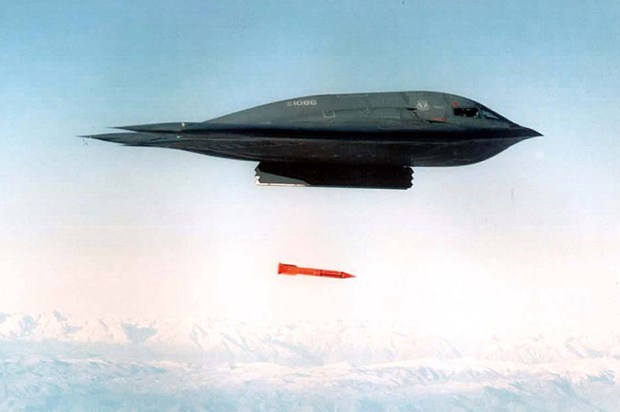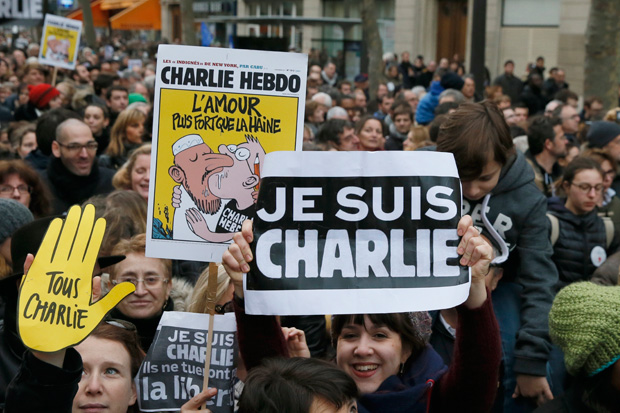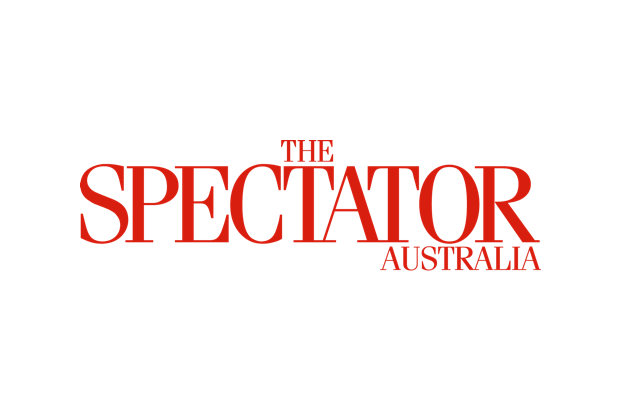When two dozen militants from Lashkar-e-Taiba wrought havoc across Mumbai in 2008, it was the first example of a strategic evolution in transnational jihadism: the use of firearms, in lieu of explosives, in a peacetime urban centre. As Paris discovered last week, these tactics haven’t gone away.
With Australia having experienced the first fatal incident of jihadi terrorism on its own soil in December, it’s vitally important to understand how such incidents fit into the global jihadist framework. The attack on the offices of Charlie Hebdo and the fatal siege at the kosher supermarket in Paris fit two places on the spectrum of contemporary terrorism.
In a prescient and timely piece for War on the Rocks, Clint Watts suggests that three overlapping labels are the best way to examine jihadi plots: ‘directed’, ‘inspired’, and ‘networked’. Watts writes, ‘These… should not be seen as discrete categories but instead as phases across a spectrum – some plots and their perpetrators will bleed over these boundaries.’
Spectacular, directed attacks – 9/11, or the 7/7 London Bombings, to name just two – in the words of Watts, are less frequent, highly capable, and the most dangerous type of terror attack. The misleadingly named al Qaeda cell, the Khorasan Group – whom I wrote about for this magazine in October – are one such group who still aspire to carry out spectacular attacks. According to the Australian Strategic Policy Institute’s database of coalition airstrikes in Syria and Iraq, the group have been attacked three times to disrupt their external operations.
Due to the success of counter-terrorism measures in the West and abroad, terrorist organisations are shifting from spectacular attacks to smaller scale attacks as a way of circumventing the disruption of plots by intelligence services and police. Until the attacks in Paris, most media attention had been focused towards a series of lone wolf attacks throughout the West. IS’s aggressive call for lone wolf attacks in the West had, as JM Berger noted in Foreign Policy, led to two attacks in Canada, and the stabbing of two police officers in Melbourne by a man who publicly displayed an IS flag, and a hatchet attack in the United States, among others, including attacks in France. IS has clearly been more successful than al Qaeda in its promulgation of the lone wolf attack, which Watts would call ‘inspired’ plots,
The Lindt café attack in Sydney was one such ‘inspired’ incident. Man Monis had declared his allegiance to IS on his now defunct-website, insisted to hostages that he was their representative, and demanded an IS flag from police. In comparison to Paris, where the gunmen clearly had experience with firearms, Monis’s attack was crude and amateurish.
Inspired by Aryan Nation strategist Louis Beam, who articulated the idea of a protean, leaderless resistance carrying out random acts of political violence in the United States – the ‘loon wolf’ phenomenon, to refer to Max Abrahm’s brilliant coinage –, Abu Musab al-Suri, famed for his links to the Madrid Bombings in 2004, co-opted such thinking to contemporary jihadi tactics, helped by the increasingly globalised nature of communications.
After the bloody conclusion of the Sydney Siege, IS praised Monis in it’s English-language magazine Daqib, and implored others to carry out similar attacks, as it had in previous issues.
Daqib owes a heavy debt to the US-Yemeni cleric, Anwar al-Awlaki, who came to international prominence for his vast influence as an English-speaking jihadi luminary. His magazine, Inspire, is disseminated by al Qaeda in the Arabian Peninsula (AQAP), which has long been described as the most serious threat to the West due to the innovative nature of its bomb-makers and history of external operations. The pressure-cookers used by the Tsarnaev brothers in the Boston Marathon bombings were built from instructions provided in the magazine.
As with Monin in Sydney, the slaying of Drummer Lee Rigby in Woolwich, or the recent attack in Ottawa, plots carried out by inspired, lone individuals have become frequent, are much more difficult for intelligence services to detect and intercept, and tend to inspire copycats. Their comparatively small lethality, if compared to ‘networked’ or ‘directed’ plots is due to the low-tech nature of such attacks; butcher’s knives and small-arms instead of bombs and passenger aircraft.
The Paris attacks were both networked and inspired; the Kouachit brothers’ had links to AQAP, combined with kosher supermarket attacker Amedy Coulibaly’s posthumous video in which he pledged allegiance to IS and claimed to have coordinated with the brothers, lending them several thousand Euros.
Quoted in Slate magazine recently, Daveed Gartenstein-Ross notes that Western intelligence services are more adept at stopping groups of attackers. The Paris-style urban warfare attack requires logistics and multiple participants. As with the September terrorism raids in Sydney, the correspondence between Omarjan Azari and his co-conspirators was enough for the police to disrupt the plot to behead a random non-Muslim member of the public.
Watts asks whether the Charlie Hebdo attackers will push the West to take a serious stance on foreign fighters moving to Syria. Any action is a hostage to Southeastern Turkey, which has become the most important jurisdiction serving terrorism finance, arms smuggling, illegal oil sales, and the flow of foreign fighters. Effectively, Turkey is to Syria what Pakistan was to Afghanistan in the 1980s.
The links between AQAP and the Kouachit brothers vindicate fears about the huge mobilisation of foreign fighters to Syria and Iraq, namely the development of formalised networks of Western foreign fighters. The exponentially increasing number of fighters moving to that theatre means that even if the ratio of returning fighters who carry out attacks in the West is comparatively low, the sheer size of the mobilisation represents an evolving and significant national security threat.
We are dealing, as David Martin Jones wrote in the Australian, with an ‘aspect of jihadism and the capacity of a version of Islam to play into the cult of death’ that has a transnational reach and appeal, perfectly summed up in an address to Israelis on Hamas state television, ‘we love death more than you love life’.
Got something to add? Join the discussion and comment below.
You might disagree with half of it, but you’ll enjoy reading all of it. Try your first month for free, then just $2 a week for the remainder of your first year.










